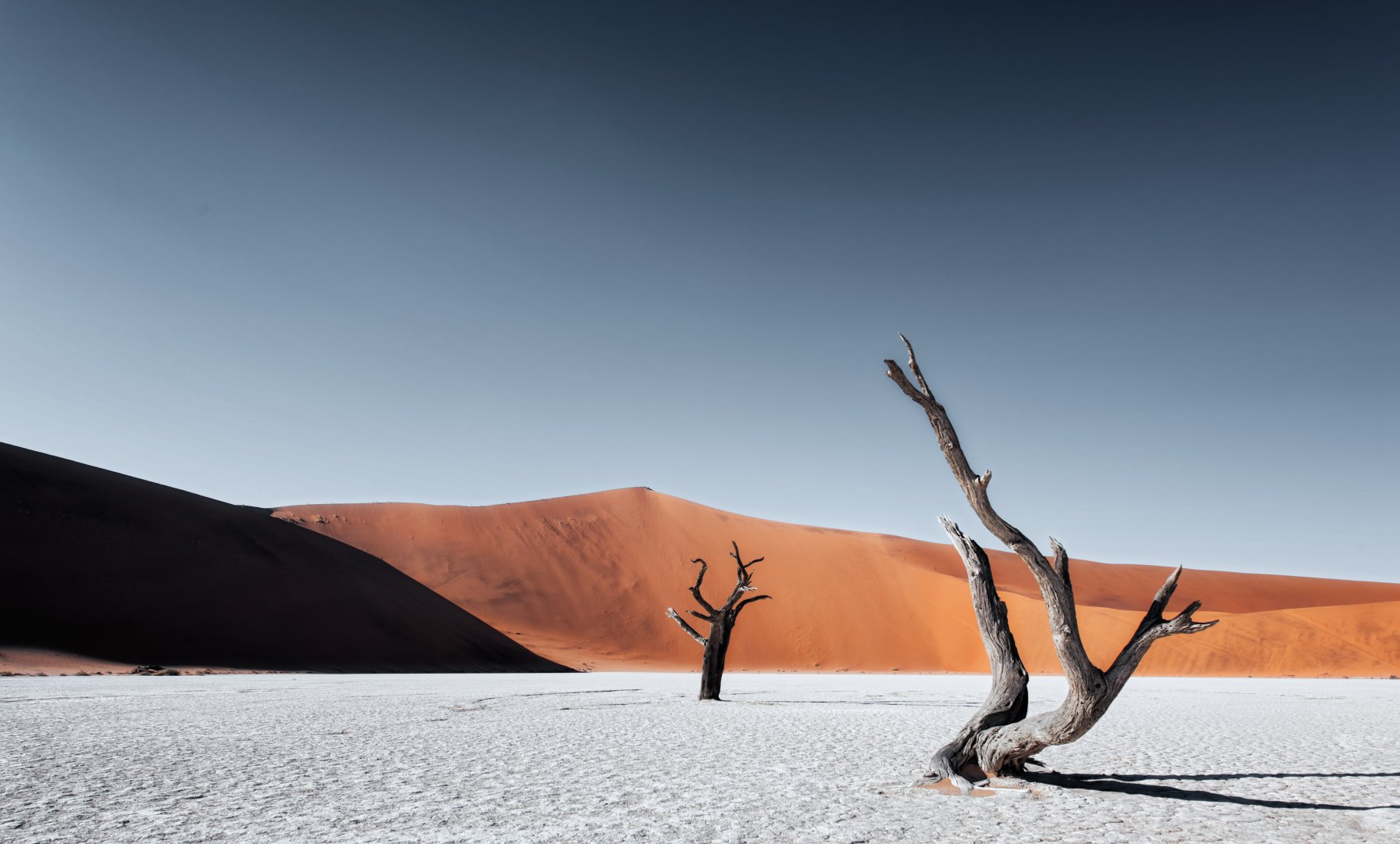
Rianna Tassabehji makes her way amid rocky outcrops on a trail that twists at the bottom of a hill. Batloun, Lebanon. September 14, 2022. (Chris Trinh/The Public Source)
Returning to the land and our oral plantcestral history
The Public Source profiles foragers and environmentalists who work to preserve local ecological heritage and ancestral knowledge in Lebanon. Many of them lead initiatives that reintroduce cultural practices around growing, foraging, cooking and plant medicine into daily life.
By The Public Source
We follow forager Rianna Tassabehji, 25, down a pastoral path she has always been curious about. Just off the Batloun municipality, the road winds down to the right at a freshwater spring, and plunges into the valley of Batloun. Rianna stops at every plant, names it and describes what it’s good for: zaarour (hawthorn) is made into ketchup; fig leaves are edible and taste like coconut; broadleaf plantain can be made into a poultice for rashes.
“Dock leaves are good for liver health and the seeds can be ground and used as flour,” she explains, stopping in front of broad green leaves sprouting straight from the ground. “The roots can be used for detoxing the liver.”
This article was originally published 11 October 2022 by The Public Source. The Public Source is a Beirut-based independent media organisation dedicated to uncompromising journalism and critical commentary from the left. The Public Source writes deeply and critically on vital issues from local perspectives, in the service of public interest and in solidarity with Global South publics.
Dried figs litter the path as we walk further down. Rianna notices and stops to pick ripe figs from the trees above us. We reach a bridge that crosses over the Awali river, and as we continue up the rocky trail, she spots a tall Syrian thistle (kharfish) and pulls a knife out of a colorful crochet tote bag decorated with rainbow mushrooms to cut a bit for herself. While she manages to snag a piece, she also injures her fingertip, and it bleeds.
To learn more about wild edible and medicinal plants commonly found in Lebanon and their traditional and contemporary uses, check out this story’s companion PS Visual Plantcestral Remedies for Perennial Ailments.
The forager looks around for tayyoun (sticky fleabane) to treat her wound. Once she finds the plant she picks a single leaf, chews it for just under 10 seconds, and places it on the wound. The plant is sticky even before it’s been chewed and works like a bandage, she explains to us, adding that it’s also an effective disinfectant. When she pulls the tayyoun off her fingertip minutes later, the bleeding had stopped.
“For the last couple of years, I’ve been in the process of decolonising my mind, so part of that was decolonising my view on medicine,” she says.

Rianna is one of many people across Lebanon who value ancestral knowledge — its ties to growing and planting, food-making and cultural practices — and the way it connects us to nature and the world around us. Some are leading initiatives that reintroduce these practices in daily life at a time of extreme precarity.
Lebanon, like most places, has a plethora of indigenous plants historically used for food and medicine. Foraging practices and recipes are passed on by word of mouth, largely inherited from matriarchs in rural areas. While this knowledge seems to be dwindling among younger generations and city dwellers, tetas across the country — and in the diaspora — have been an inspiration and source of knowledge for many young herbalists and collectives.
“For the last couple of years, I’ve been in the process of decolonising my mind, so part of that was decolonising my view on medicine.” —Rianna Tassabehji, forager
For Layla Feghali’s family, who emigrated to the US, food plants have always been an important link to home. Her maternal grandmother, who hailed from the south of Lebanon, had recreated her village life in Florida. Her house smelled of zaatar and the comfort of tradition. She tended an orange orchard, baked bread on saj, made rosewater every year and cherished the jars of olives that visiting relatives brought from Lebanon.
Expanding on her grandma’s recipes and remedies, Feghali says her work as an herbalist focuses on “remembrance and preservation of culture and oral traditions and of the memory that is contained inside land and inside plants.”
Knowing (and eating) your native plants
Seventy-one-year-old Souhaila Massoud Ghanem still seasonally walks the Chouf valley for hours on the lookout for wild food plants. The matriarch from Wardanieh is known to youth and elders alike for her healthy recipes and herbal remedies.
Qors‘anneh (eryngo), qorra (nasturtium), khubbeizeh (mallow), hummaydah (yellow dock), hindbeh (dandelion), jarjir (arugula) and dardar (Centaurea ainetensis, endemic to Lebanon) grow abundantly in Lebanon, the region and in the parts of Europe and the Americas favoured by a Mediterranean climate. These wild food plants can be eaten fresh, cooked or preserved in tinctures. Some of these staples of traditional Lebanese rural diets have also become part of mainstream urban dishes.
Qors ‘anneh is rich in vitamins and iron, Ghanem says, but most importantly, she uses it as an antidote to food poisoning. “It’s very useful, hayete. It’s tried and true,” she tells us over the phone. She recommends using qorra instead of aspirin, wild mint for arthritis and infusions of zaarour flowers for blood circulation.
Khubbeizeh is a favorite in Layla Feghali’s household. Her family cooks it as you would mloukhiyeh (a type of mallow) with coriander, garlic, lemon, chicken and/or meat and rice. Another dish that Feghali recalls from her grandmother is m‘eekeh, a specialty of the village Qtaleh, Jezzine. This “economical” dish, she says, is based on a sautee of khubbeizeh and hummaydah with garlic, lemon, chili and olive oil; the combined ingredients are then stuffed into meatless kibbeh balls made with flour and burghul.
Besides eating the weed, khubbeizeh is also a first line of defense when somebody is sick with a digestive or respiratory problem. In her family, they also place a khubbeizeh leaf in the shoe, she says only half-jokingly, against stinky feet, something her grandfather had taught her father. “It really worked!” she remembers her father exclaiming.
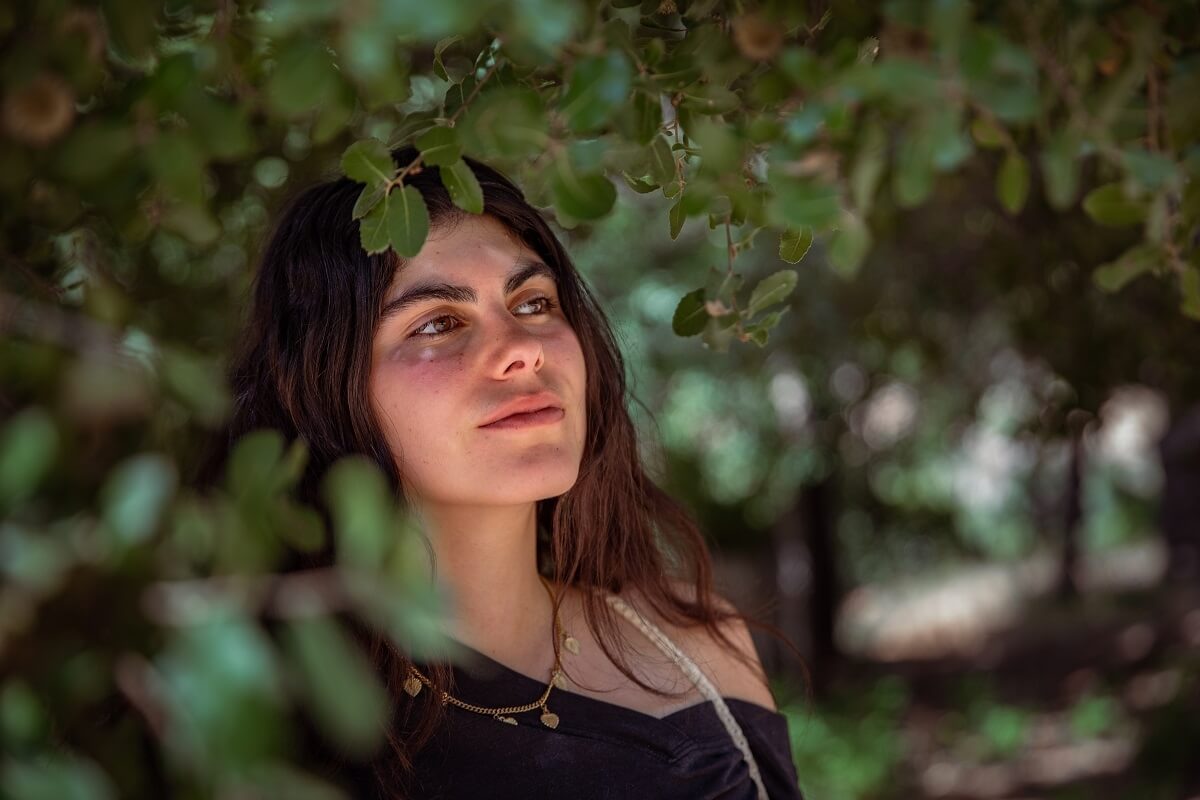
Hindbeh is a staple in Tassabehji’s diet. She chops and uses the leafy greens in everything she cooks; harvests the roots and makes tinctures with them for liver health and good digestion; and eats the vitamin-packed flowers whenever she comes across them.
“I really enjoy eating plants directly from the [source],” she says excitedly. “And when I’m eating herbs from the ground I say, ‘I’m taking my vitamins.’”
In the last few decades, this vernacular knowledge has inspired local researchers and scientists to learn about and study the nutritional and medicinal properties of commonly used wild edible plants. Scientists at the Department of Nutrition and Food Science at the American University of Beirut analysed the nutritional content of prevalent food plants and compared the results to traditional knowledge.
They confirmed that khubbeizeh has a high nutrient content. The researchers then talked with several matriarchs who used hindbeh in treating anemia to “strengthen blood,” boost the immune system and relieve inflammation. In their tests, they found that the weed is rich in iron and vitamin C, which suggests that the matriarchs have been right all along in using it to cure these ailments.
In general, wild plants are rich in antioxidants, according to Malek Batal, a professor of public health nutrition who led the research from 2004 to 2007. Wild edible plants are often used for their anti-microbial and anti-inflammatory properties, especially in the treatment of respiratory and intestinal diseases. Zayzafoun (tilia) is a prime example: villagers use it to make tea to treat throat infections; researchers at the Lebanese American University found that it does indeed stop the growth of bacteria under certain conditions.
In the last few decades, this vernacular knowledge has inspired local researchers and scientists to learn about and study the nutritional and medicinal properties of commonly used wild edible plants.
For Nayla Kahwaji, the way to achieve a diet that meets the body’s needs is by following the seasons. Kahwaji is a forager who quit her corporate job to live off the land she tends to and give workshops about medicinal herbs, foraging and the connection between human bodies and nature.
“As long as you’re eating what nature is giving you within the season, you are super healthy because nature always preempts what we need,” she tells The Public Source. In the fall, the fruits and vegetables are abundant in vitamin C, which boosts immunity before the start of winter. With the coming of spring, after a sluggish season, nature offers edible greens that help detox and stimulate the body ahead of summer, she continues.
The global food system
The knowledge and consumption of wild edible plants has diminished across the generations. Kahwaji has seen this in her own garden. Like most people, her mother discards orreiss (stinging nettle), like she would any other weed, even though her own grandmother used it. The forager explains that she herself had the chance to meet Sheikha Rada, an elderly woman from the Chouf, who showed her the ropes of foraging and taught her that orreiss is good for the kidneys and a source of vitamins and minerals to the body.
But preserving traditional plant knowledge and food practices is not only about one’s roots in a village, the luxury of time to learn from elders or even the means to afford foraging excursions outside the city.
The globalisation of the food production system has been a means of dispossession here and in the world, transforming food sovereignty paradigms into relations of dependency. Vernacular plant knowledge gradually became redundant, as agribusinesses stripped indigenous populations of their lands in the Global South and dismantled native food production systems, forcing people toward “modes of dietary consumption out of tune with their ecology, environment, culture, society or economics.”
Batal tells The Public Source that in Lebanon, too, “changes in the diet are linked with the food system.” This shift has also had “truly frightening” public health consequences such as spiking rates of obesity, cardiovascular disease and diabetes.
The globalisation of the food production system has been a means of dispossession here and in the world, transforming food sovereignty paradigms into relations of dependency.
Working against the global grain, Batal’s research team, with the help of local communities, created a database of 46 wild food plants, noting their seasons of harvest and their perceived, then tested, nutritional and medicinal benefits. They found that diversifying ingredients with local edibles makes for a healthier diet than prevalent westernised diets which tend to be low in fiber and high in saturated fat, sugar and salt.
They mobilised their findings to promote wild edible plants as a good source of nutrition among marginalised communities in Hermel, Ersal and Chouf, hoping to reverse the social stigma associated with foraging.
“We were told,” he recalls, that “shame came from offering food that wasn’t purchased, meaning that it was the poor man’s food.” Some villagers would not offer their guests – or even their own children – free, foraged food, opting instead for store-bought ingredients and processed foods.
Some parents who had wrongly assumed that their kids would not eat traditional foods were in for a surprise, as it turned out that their children enjoyed wholewheat fatayer stuffed with wild greens.
“It was extremely important that a conversation was happening, thanks to the project, around the importance of local foods; that these greens were valuable and they deserved being preserved, conserved and talked about,” he concludes.
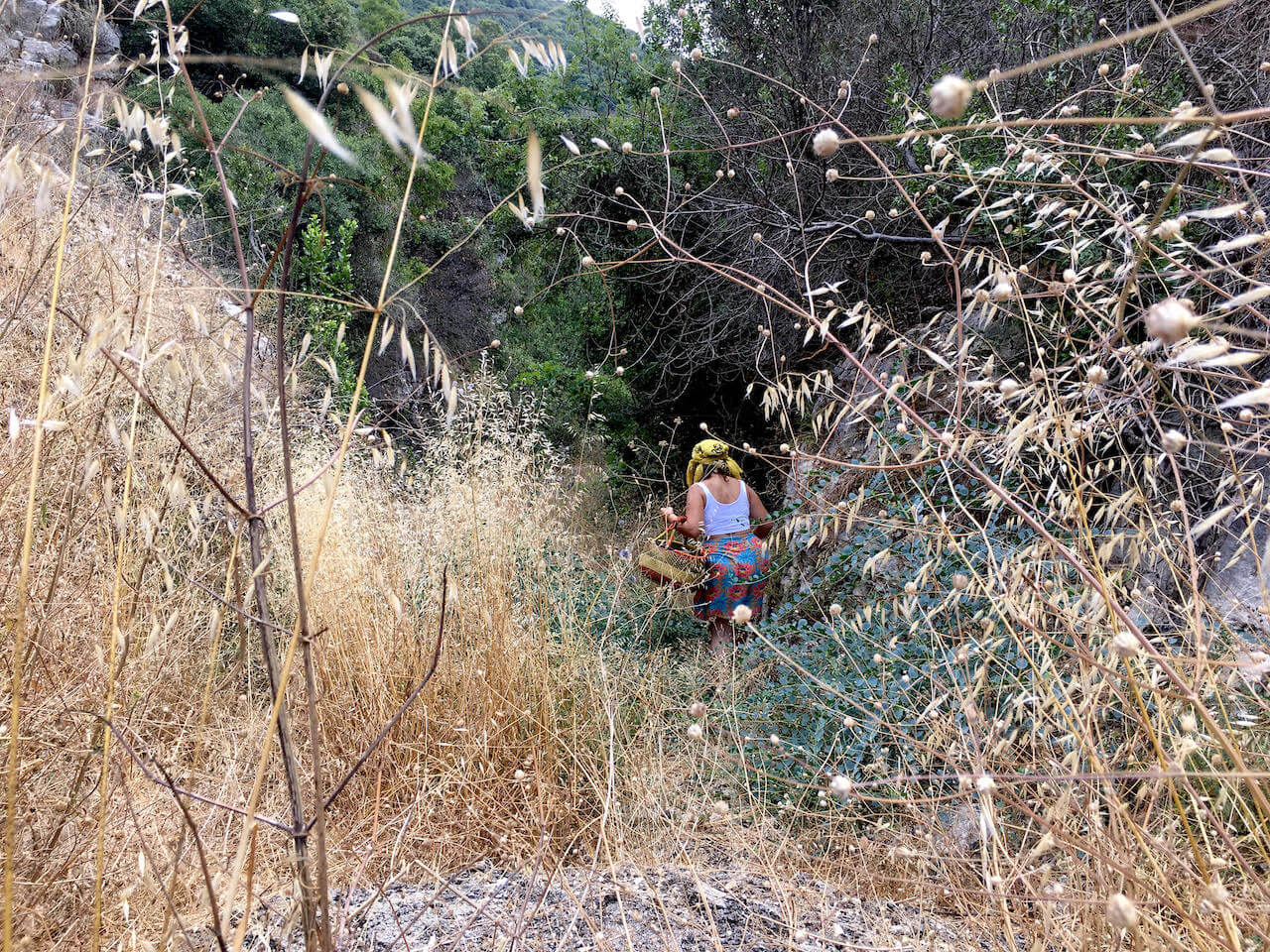
These conversations revive the oral plantcestral history which our older matriarchs have guarded for decades, centuries, and millenia. (The term “plantcestral” is derived from Layla Feghali’s work.)
Oral history and the colonial encounter
“A lot of knowledge is oral and there is absolutely nothing wrong with that. Intellectuals and scribes want this [knowledge] to be written, but oral history is passed from one to another and has been around for thousands of years,” food systems expert Rami Zurayk tells The Public Source.
Because it is not written, this matrilineal knowledge has historically been dismissed as folk, if not primitive, beliefs – less than white man’s western “science”.
In mandate Lebanon, the French studied both vernacular knowledge and the local botany, cataloguing the latter under “standardised” taxonomies that the west has agreed on, explains Zurayk.
“Power imposes this standard methodology so that it can recognise it[self]. But not all knowledge needs to be coded in a way that is comprehensible by the dominant ontological paradigms,” he continues.
“A lot of knowledge is oral and there is absolutely nothing wrong with that. Intellectuals and scribes want this [knowledge] to be written, but oral history is passed from one to another and has been around for thousands of years.” —Ramy Zurayk, food systems expert
By documenting and representing native flora, colonisers profess a long and continuous presence in a place, so as to fully know the landscape and lay claim to it. “This approach is not benign; early Zionist settlers did exactly this in Palestine,” Zurayk explains.
And to produce this knowledge using standardised methodologies that align with conventions of western science is to dismiss traditional methodologies of knowledge production and preservation, such as oral history, he concludes.
Deregulated development
While foragers, herbalists and scientists are rekindling relationships to oral history, herbal medicine and traditional foods, they worry about the rapid degradation of natural environments caused by deregulated development and urbanisation.
For-profit development means that more and more buildings, roads, parking lots and dams encroach on natural habitats; that rivers, mountains and coasts are polluted with solid, industrial and toxic wastes and gases. The absence of enforceable zoning laws, Malek Batal tells The Public Source, also makes us lose a lot of lands and ecologies to quarries and construction.
A study from 2008 reveals that in 2005, there were 1278 quarries, many of them in forests, scrublands and fertile lands, which is “a clear violation of resources, natural landscapes and people’s health despite the legal guidelines and conditions that regulate the licensing of quarries,” according to Public Works Studio.
Batal explains why the model of a reserve, closed-off to people, is also an unhelpful extreme. “There needs to be a place where one can forage, for example, but at the same time, it’s preserved from random buildings and concrete.”
Many natural sites that conservation expert Salma Nashabe Talhouk was exploring throughout her research were destroyed and built over before the end of her project. This disheartening loss drove her to redirect her attention from studying plants in and by themselves to studying plants in relation to people: how do we perceive and relate to the natural world?
“Sometimes I worry that the focus is too utilitarian,” she tells The Public Source.
Ethical foraging
When foragers do have access to abundant natural land, it is still crucial to forage in the right season, the right way and the right quantity, Nayla Kahwaji points out. It’s important not to over-harvest wild plants beyond their capacity to sustainably thrive, or else the ecological balance could be threatened, disrupting the work of pollinators and other animals. This risk is amplified when foraging becomes a touristy activity devoid of any meaningful and sustainable connection to the land.
Souhaila Massoud Ghanem, the elderly woman from Chouf, explains how she is careful about cutting herbs without uprooting them. “When I come back after a while, I see that one stem has multiplied into five.”
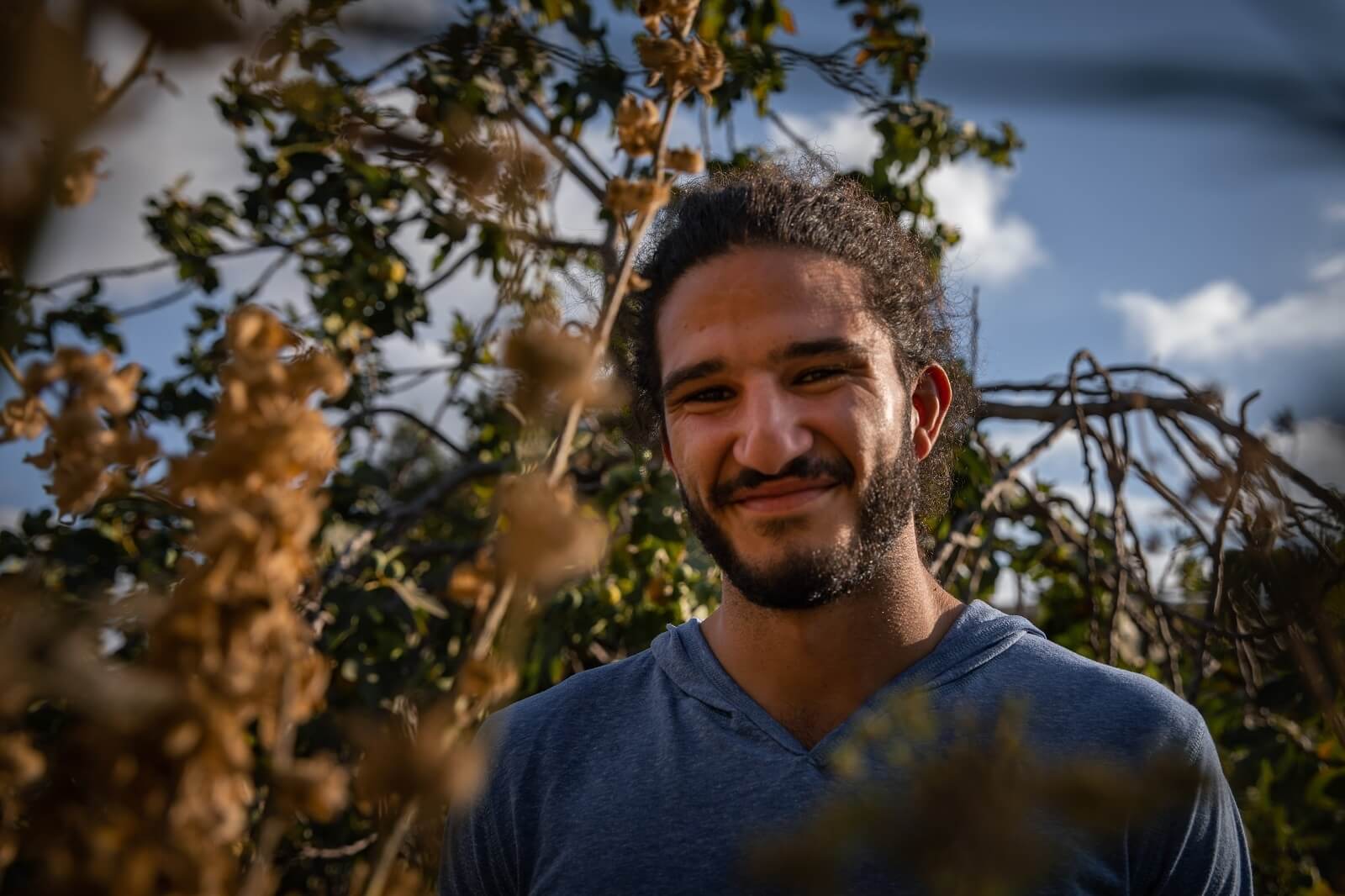
Herbalist Layla Feghali emphasises how “part of responsible foraging is learning how to be in a foraging relationship that maintains the livelihood and the integrity of the native plants rather than infringing on them,” she says. As she is learning to forage from elders, she is recognising how their vernacular knowledge intrinsically values the integrity of our native ecology; land-based knowledge respects this balance and maintains it.
Returning to the land
In her professional work, Feghali has been trying to document, honor and share this knowledge. She leads one of many interconnected collectives that are preserving the oral history of native flora, or even conserving the plants.
SWANA Ancestral Hub, Feghali’s collective, brings together diasporic communities to stimulate conversations around local histories of food practices, herbal medicine and traditional crafts. “Nejma‘ Jouzourna” (we are gathering our ancestors) is a living archive of information on ancestral and land-based practices, involving a website, workshops and a social media community.
“My work centres on ancestral traditions because I really am not interested in importing knowledge about land for no reason. I’m interested in repairing the intelligence and the integrity of our relationship to place because I know that that is part of the integrity of our whole world,” Feghali says.
In August of this year, the herbal collective Tariq el-Nahl (Way of the Bees), friends of SWANA Ancestral Hub, inaugurated a native botanical garden that conserves endemic plants just above the valley of Batloun.
Tariq el Nahl’s botanical garden is like a living museum: it appeals to the senses, educates, and conserves native flora.
The collective welcomed the public into the 500-square-metre garden nurtured by its members in collaboration with Beit Sarmada, a collectively run historic house-turned-communal space for theater, art and mouneh.
More than a hundred endemic plants grow in different clusters that recreate their natural habitats in the Batloun valley: aromatic herbs, like shay el jabal (mountain tea or ironwort) and qas‘in (Eastern Mediterranean sage); bulbous plants, like basal al ziz (tassel hyacinth) and sahlab antlika (Anatolian orchid); rocky outcrops like ja‘de rmediye (felty germander) and ward al shams (Arabian cistus); and wetland plants like na‘na‘ taweel al awrak (horsemint) and ‘eren ma‘izi (stinking tutsan).
Local artists have also created wooden and stone sculptures and laid out walkways punctuated by colourful mosaics representing the surrounding flora. The garden is like a living museum: it appeals to the senses, educates and conserves native flora.
“What’s really important now is how [the garden] is used and how the local community is engaged,” says Boulos Saad, a founder of Tariq el Nahl.
Since August 2020, the young environmentalist has been facilitating multiple projects, including the garden, to conserve the flora of Batloun, working with herbalists, educators, body-workers, ethnobotanists, farmers and activists who have invested their time and resources into the collective.
“If [this work] doesn’t translate into a greater conservation of our valley here, then it’s almost like you’ve lost the fight and you’re creating a memorial [out of the garden], and that’s not the goal,” he tells The Public Source.
Botanist Hicham el Zein is working with the collective to create a seed bank. He surveyed the flora of Batloun and collected seeds of hundreds of plant species for growing in the garden.
“You cannot think of nature conservation as just an exercise of preservation… it’s [more] an issue of establishing a relationship [of] harmony with your natural environment.” —Salma Nashabe Talhouk, conservation expert
The group is also developing a public multimedia database so people can learn about the life cycle of plants, their nutritional, medicinal, and ornamental uses, and how they are used in traditional recipes.
After the Beirut Port explosion, Feghali and Tariq el-Nahl produced a free book, titled “Li Beirut,” gathering bits of the oral plantcestral history they have been recording. In these critical times, one might think of this bilingual guide to herbal knowledge, survival basics and remedies as useful, if not vital.
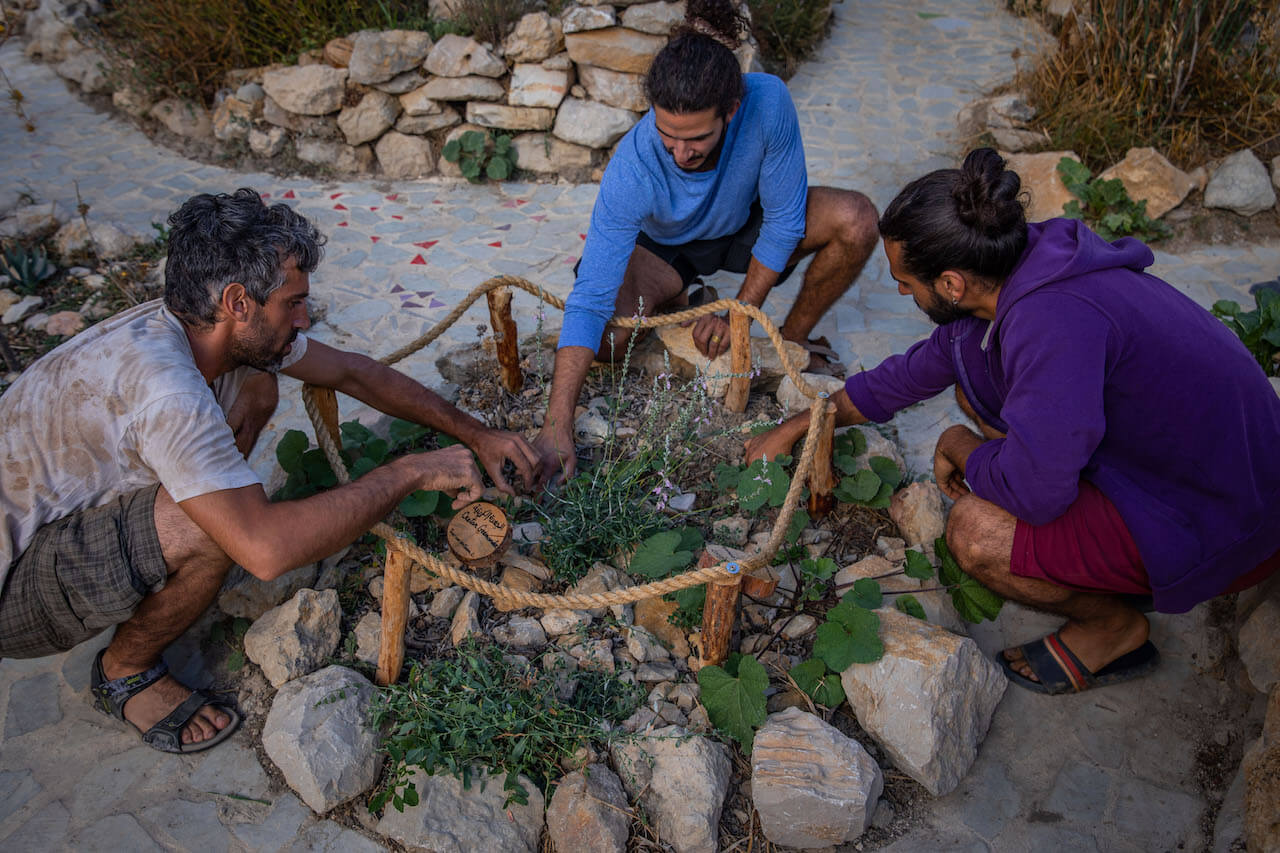
Researchers at the Nature Conservation Center at the American University of Beirut have also published a book on native plants and conducted several studies on the perception, use and nutritional value of food plants, including Malek Batal’s project.
Salma Nashabe Talhouk, who presided over the centre from 2001 to 2012, says that they adopt a participatory approach to mapping cultural and natural heritage in different villages, featuring wild food plants.
“You cannot think of nature conservation as just an exercise of preservation… it’s [more] an issue of establishing a relationship [of] harmony with your natural environment,” she says, one that goes beyond food provision and natural medicine, engaging all the senses.
The conservationist Talhouk is, is inimitably vivid.
“When you harvest your own plants from the wild, it means you have been outside. You have experienced the air, the sun. You have climbed, you have touched the soil, you have looked at the plant in its context, you have taken part of this plant and you have thought about the next time you will come,” she muses.
Yara El Murr is a journalist at The Public Source.
Christina Cavalcanti is a journalist at The Public Source.
IMS’ reader on environment in the MENA region
The pieces published here tell the story of the way the environment has been understood and questioned by our partners in the MENA region.
